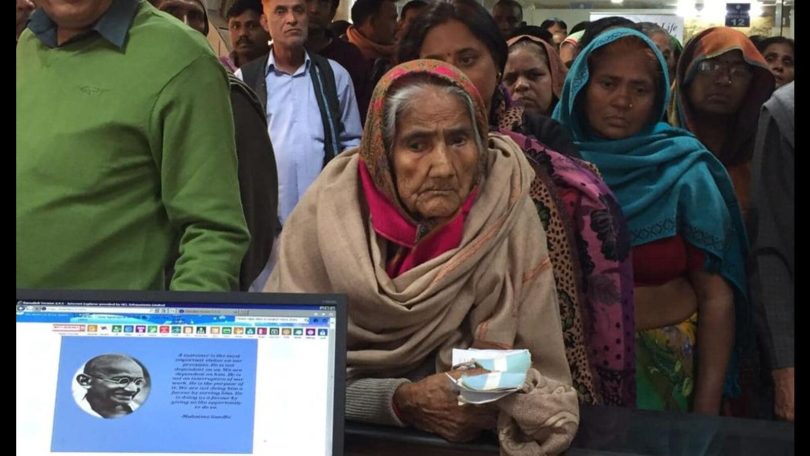[ad_1]
The Pradhan Mantri Jan Dhan Yojana (PMJDY) is the Union government’s flagship financial inclusion programme. Launched in 2014, PMJDY is a national mission for financial inclusion that aims to ensure access to financial services, including a savings bank account, need-based credit, mobile and internet banking, remittances, insurance and pensions to marginalised sections. More than 470 million people have benefitted from PMJDY, out of whom 66% are from rural India. To date, PMJDY has mobilised deposits above ₹175,224 crore and issued over 320 million RuPay debit cards.
Gujarat has been one of the leading states in implementing PMJDY. It has covered 17 million beneficiaries, of which 11 million are from rural areas, and issued 120 million RuPay cards. The coverage of the programme in Gujarat is reaching saturation level, leading to two questions: First, has the substantial increase in the number of beneficiaries led to the rise in the usage of banking services (especially deposit and withdrawal). And second, to what extent have digital banking services penetrated PMJDY beneficiaries of Gujarat.
We examined account-level data for Gujarat provided by 12 public sector banks operating in the state. In particular, we analysed the financial behaviour of 4.1 million beneficiaries from 31 districts who received their bank accounts under the PMJDY programme in 2014-15 over five years (2015-19). Approximately 47% of these accounts belonged to women, while the rest to men. Almost 38% of the beneficiaries were located in rural areas. We also studied the longitudinal trend of the average frequency of deposits and withdrawals, and the extent of use of digital/mobile banking transactions among men and women and across locations — that is, those living in metros, semi-urban, urban, and rural areas.
The average frequency of deposits and withdrawals increased substantially during the five years from 2015 to 2019. Although this uptick was skewed toward men, there was also an encouraging upward trend among women beneficiaries. Between 2015 and 2019, the number of deposits per account relative to the previous year increased by an average of approximately 40% among men and 35% among women. However, the average number of withdrawals per account demonstrates their utilisation disparity. In the same period, the number of withdrawals relative to the previous year increased by approximately 50% among men, but only 27% among women.
The metro areas had the maximum increase in the utilisation of services. The average number of deposits per account rose from three in 2015 to 10 in 2019. The average number of withdrawals per account rose from under two in 2015 to approximately seven in 2019. It is heartening to note that rural Gujarat witnessed a marked increase in the utilisation of banking services, with the average number of deposits per account going up from approximately two in 2015 to seven in 2019, and the number of withdrawals per account increasing from about one in 2015 to four in 2019.
The penetration of digital banking services across different demographic groups is one of the most significant outcomes of PMJDY. The average frequency of digital transactions per account per year doubled from 1.5 in 2015 to nearly four in 2019. But a gender disparity exists here. Among men, the average utilisation of digital banking increased threefold, from approximately two in 2015 to about six in 2019. However, there was only a lukewarm increase among women beneficiaries, from 1.1 in 2015 to nearly two in 2019.
The uptake of these services among rural beneficiaries was impressive. The average number of digital transactions per account per year in rural areas more than doubled — from under two in 2015 to almost four digital transactions a year in 2019. The trend in rural areas was second only to urban areas, and outstripped metros and semi-urban areas of the state.
A wide variation existed among districts in terms of average digital transactions. For instance, the average frequency of digital transactions in 2019 was approximately one in districts such as Surendranagar and Morbi. However, districts such as Mehsana and Vadodara, with an average of over six transactions per account in 2019, showed higher utilisation of digital banking services.
The trend analysis of the financial behaviour of beneficiaries in Gujarat reveals two insights: First, there was a significant improvement in the overall utilisation of banking services, including digital transactions, among both men and women; and second, there was a significant increase in the uptake of banking services, including digital banking services, in rural areas.
The latter trend can be attributed to banking correspondents (bank mitras), who have ensured that vital banking services are delivered to the doorsteps of the PMJDY beneficiaries.
Despite these gains, there are areas for potential improvement. The growth in the uptake of banking services is more pronounced among men relative to women. Further, women’s accounts are more likely to remain dormant or unused. These trends could be attributed to relatively low financial literacy and operational information levels. A concerted push to improve the levels of banking information among women is crucial. Providing adequate incentives to the bank mitras, to help improve the utilisation of services among women, should be considered.
Praveen Kumar is an assistant professor, Boston College, US. Sandeep Kandikuppa is research fellow, East West Center, Hawaii, US The views expressed are personal
This winter season, get Flat 20% Off on Annual Subscription Plans
Enjoy Unlimited Digital Access with HT Premium

[ad_2]
Source link








